Embed knowledge of the processes with this fact sheet, poster and game
Earth’s rocks don’t stay the same forever. They are always changing from one form to another due to weathering, transportation, pressure and heat. We don’t see these transformations owing to the huge timescales involved, but we make use of the materials they produce in the construction of our schools, houses and roads.
There is no set route around the rock cycle; sedimentary rocks are not all converted into metamorphic rocks before then forming igneous rocks. The transformations that happen depend on the conditions the rocks are exposed to.
Download this
Infographic poster, fact sheet and Rock and roll board game. Display the poster in your classroom or on a projector. Alternatively, print it and use it as a handout.
Use the accompanying board game to help students avoid the common misconception that there is only one set path through the rock cycle.
Processes in the rock cycle
Scroll through the processes and rock types.
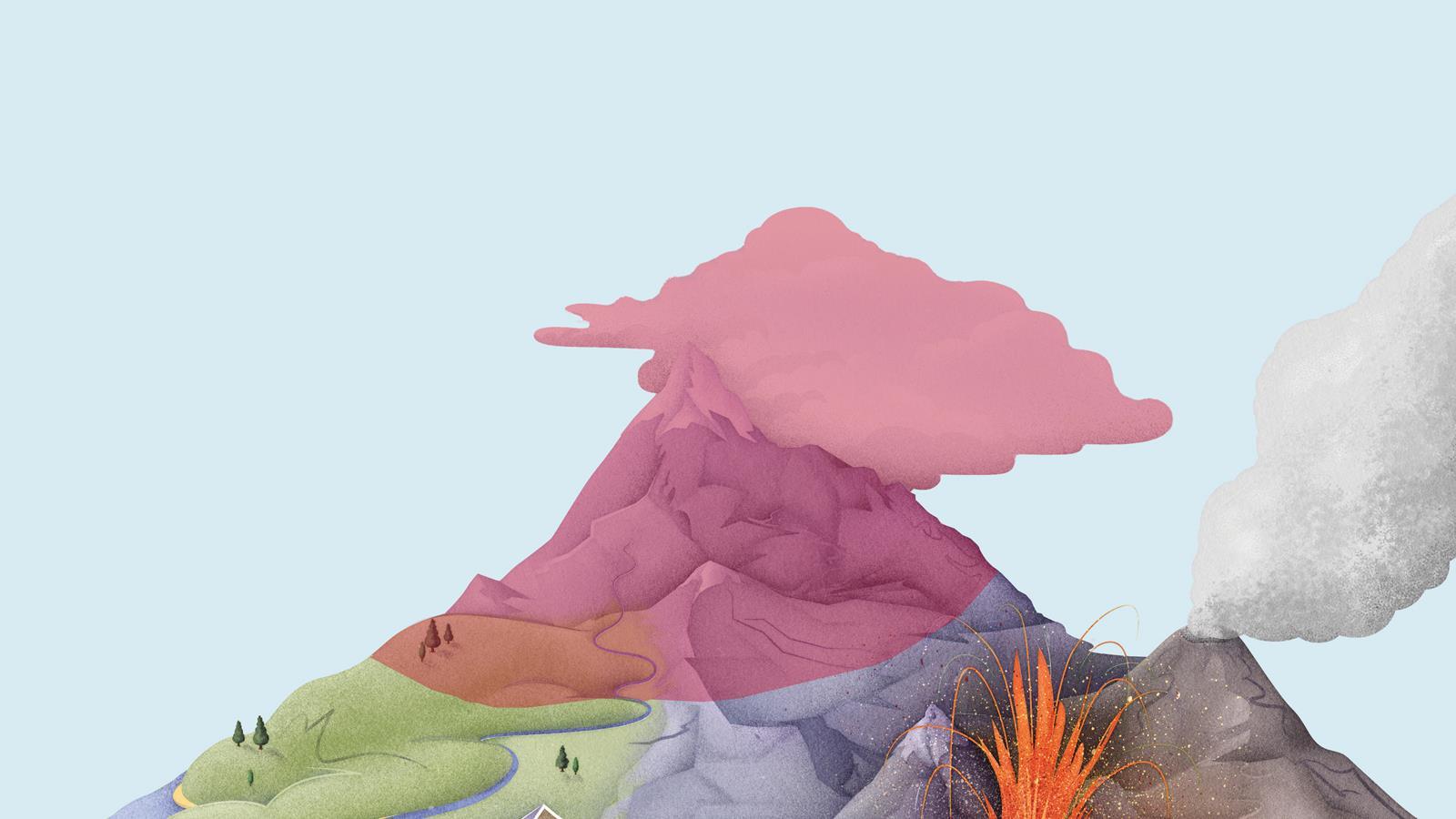
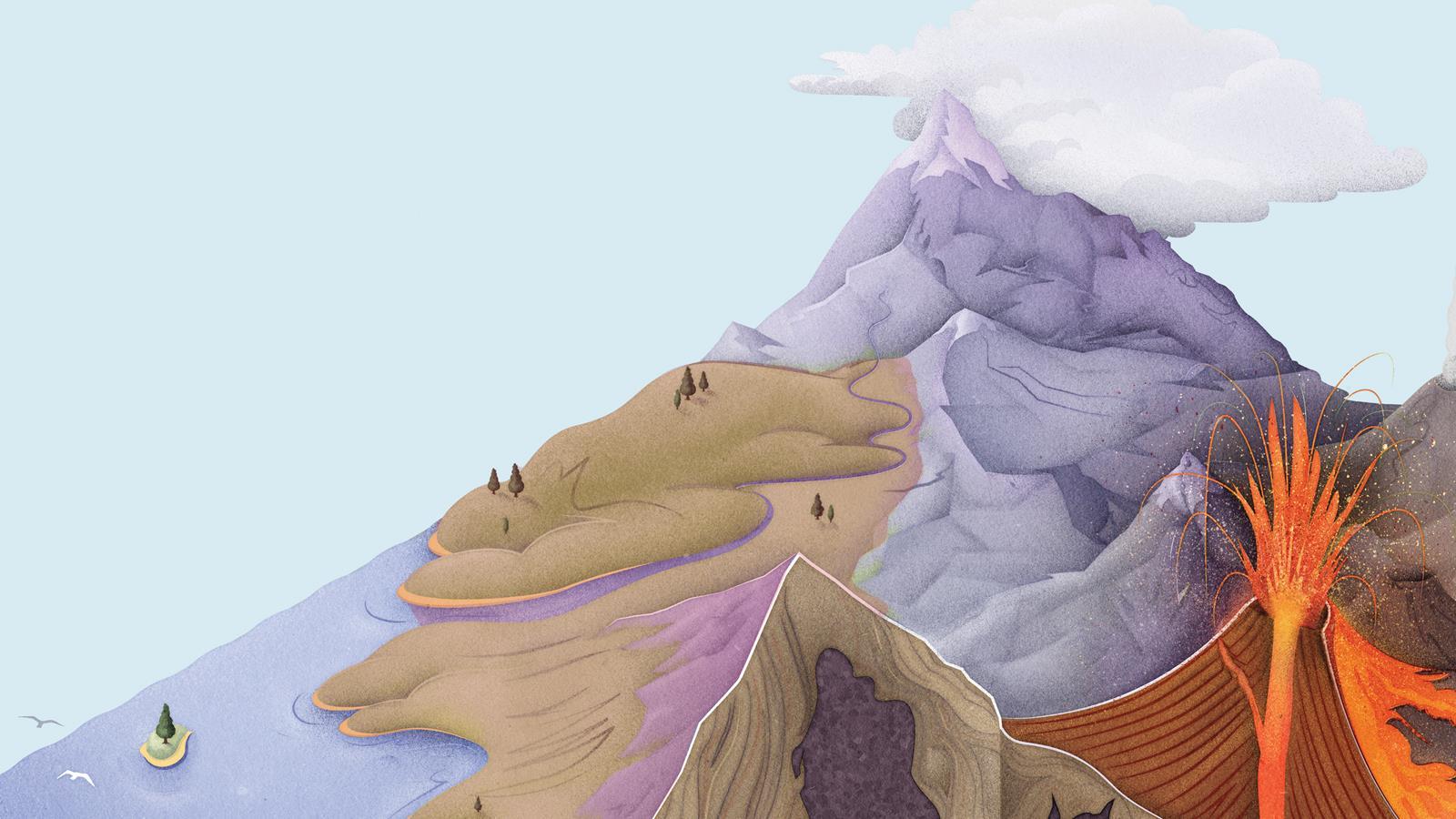
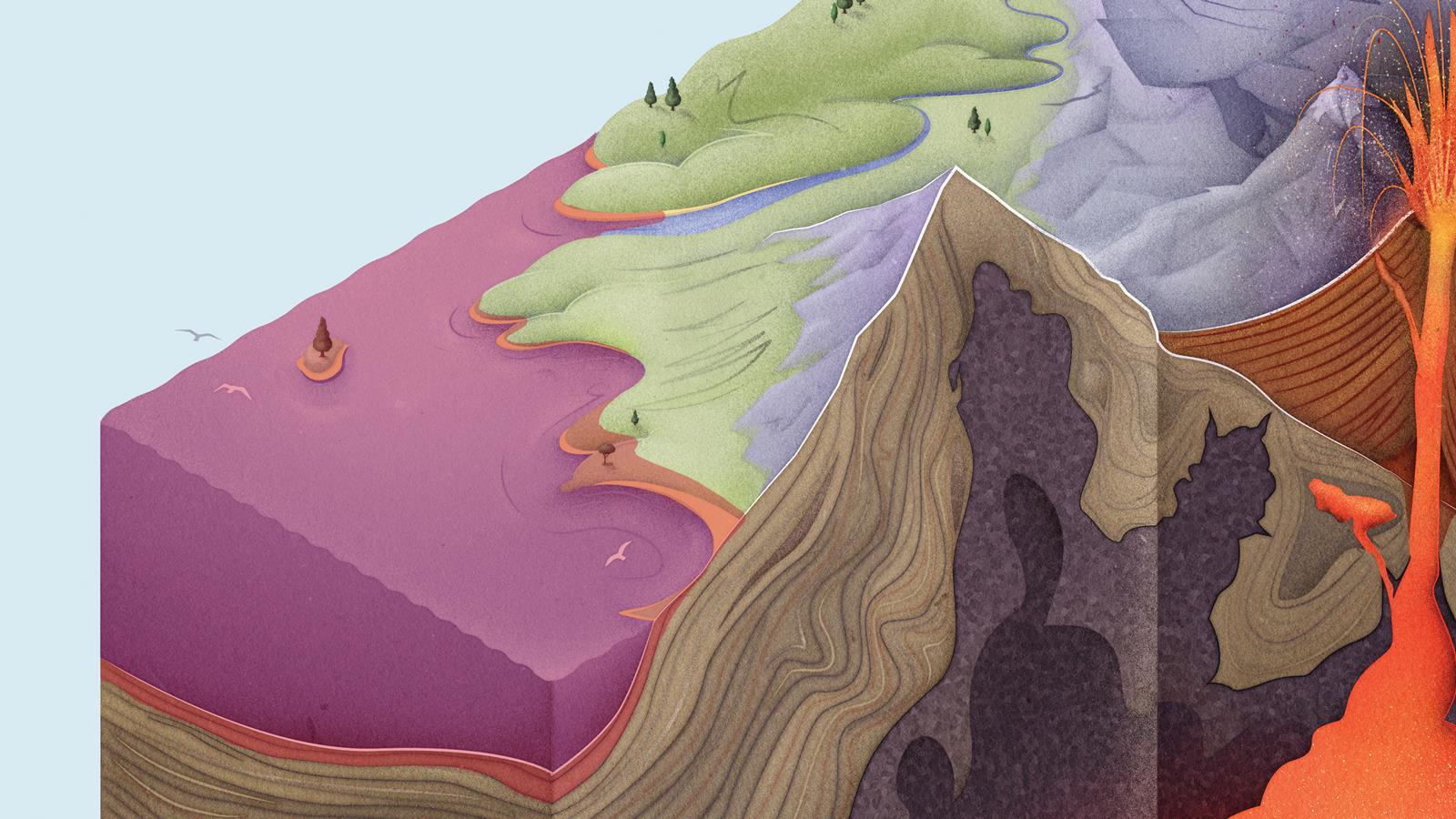
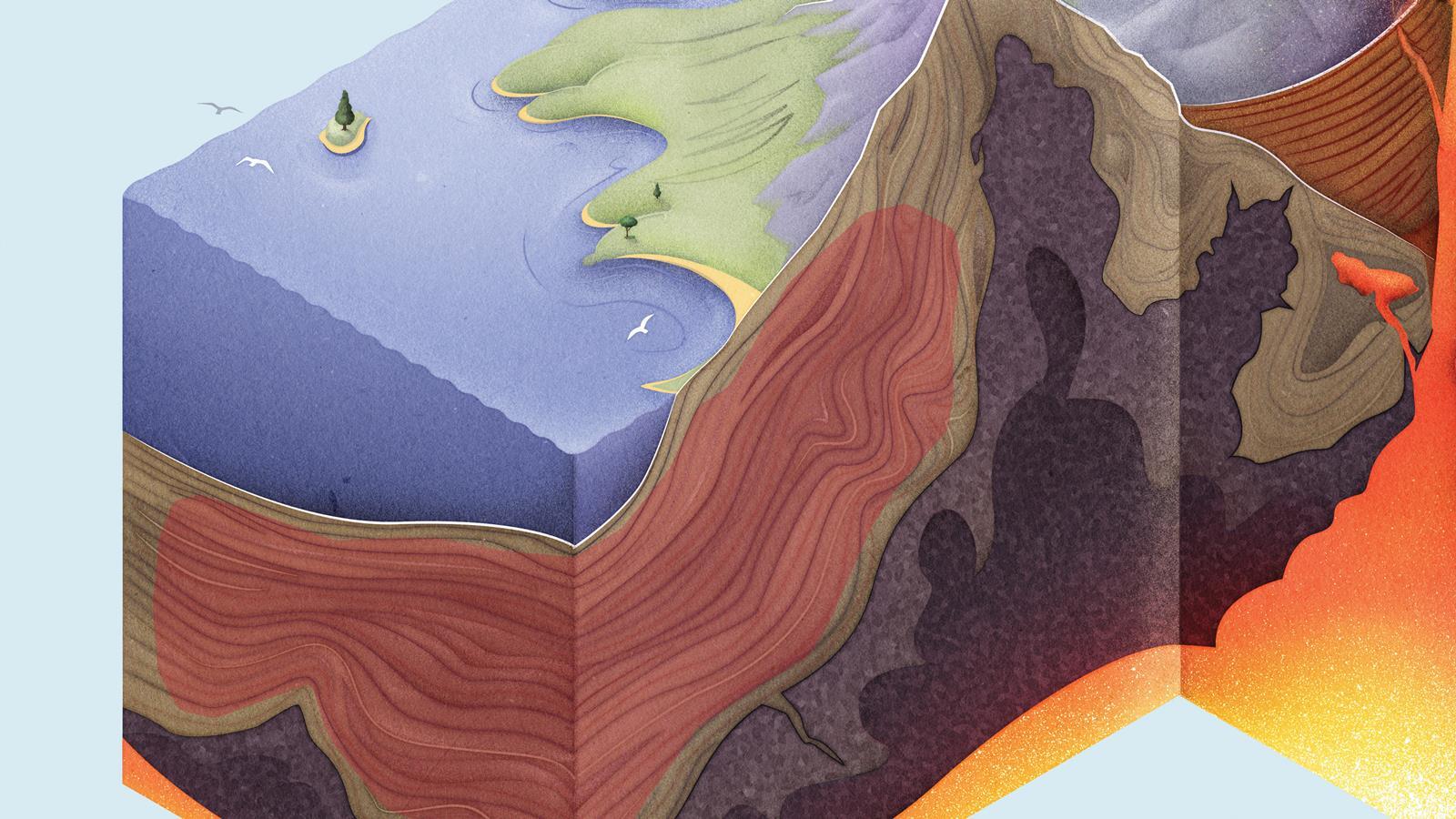

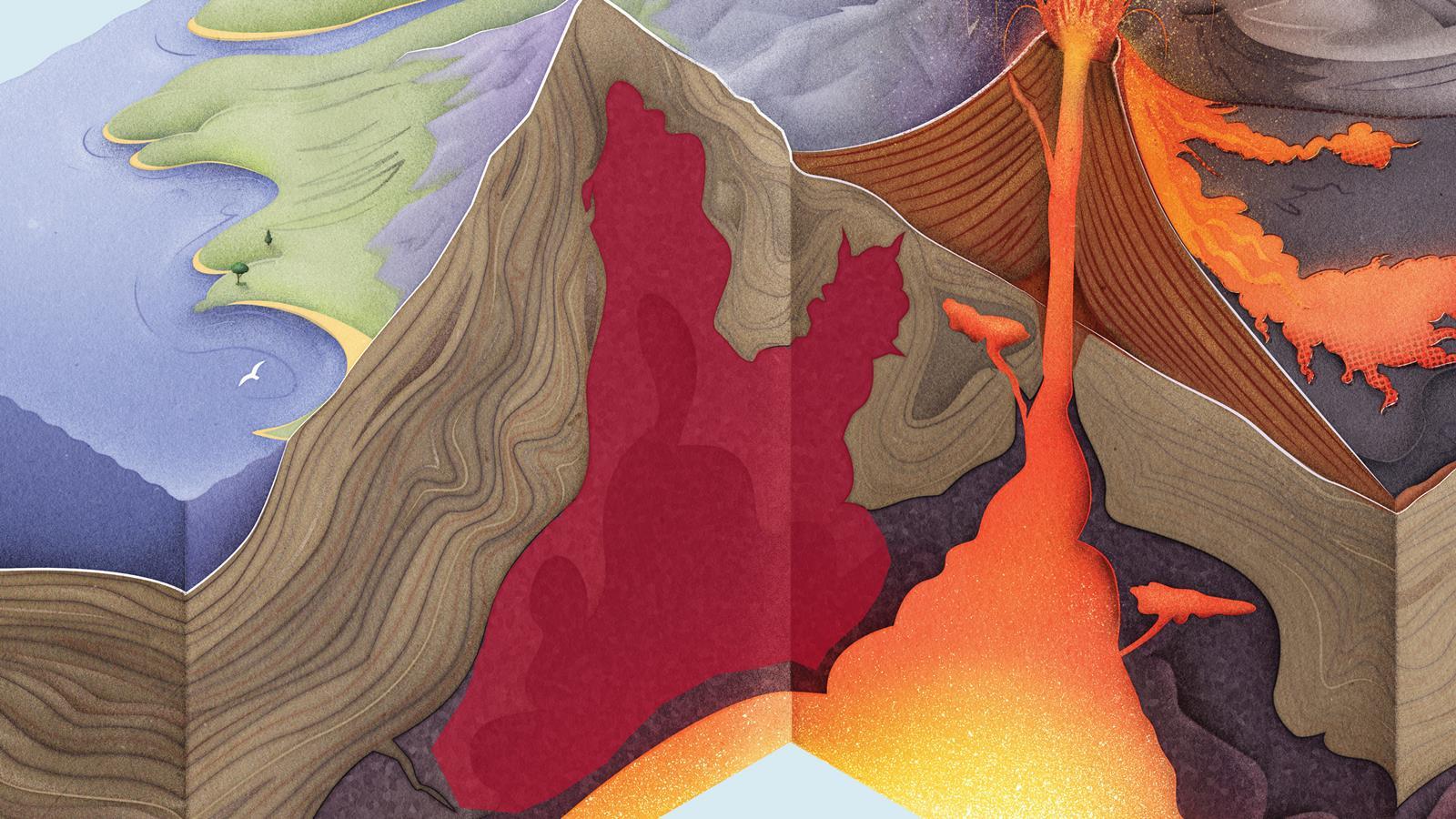
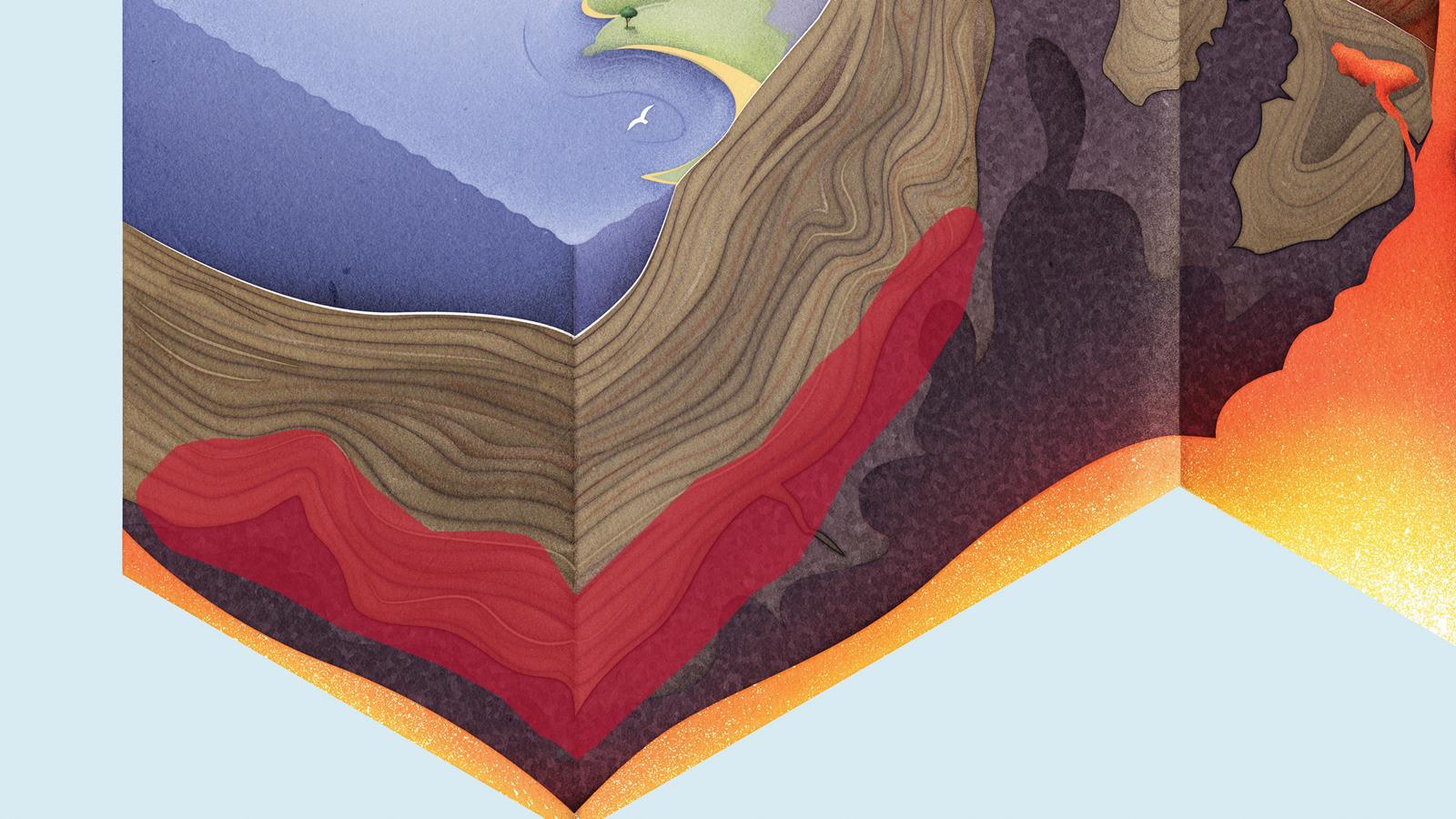
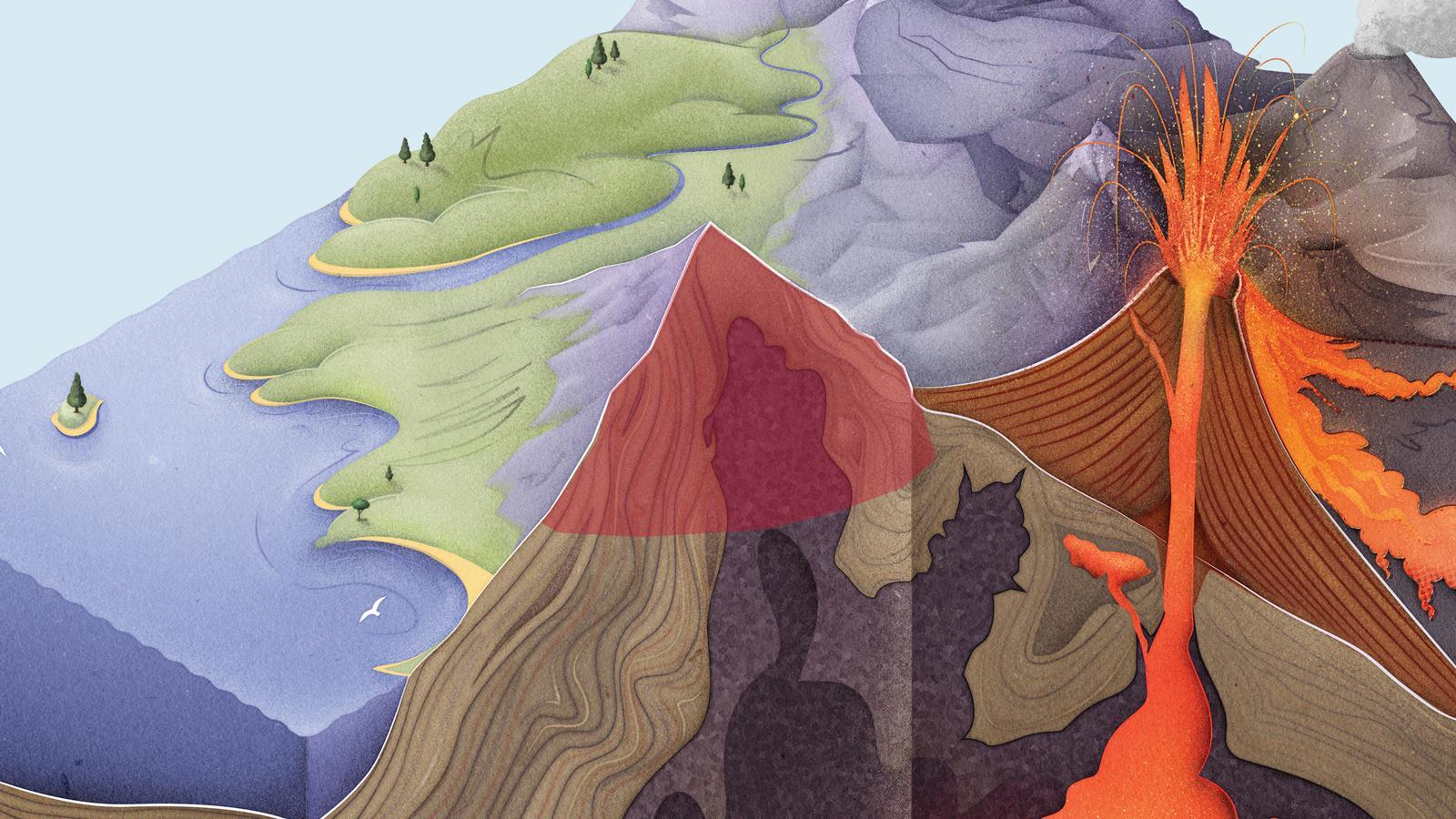
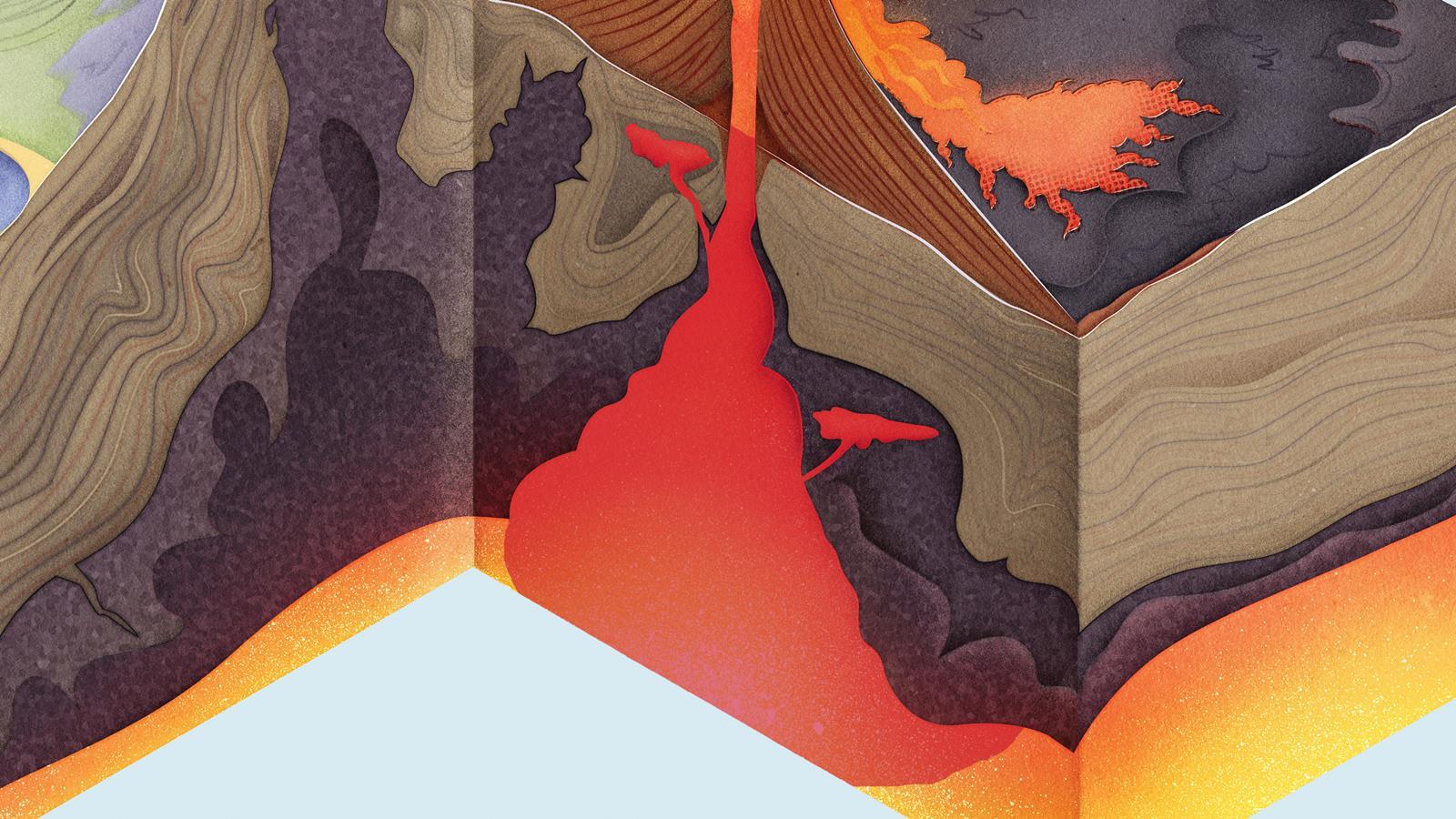
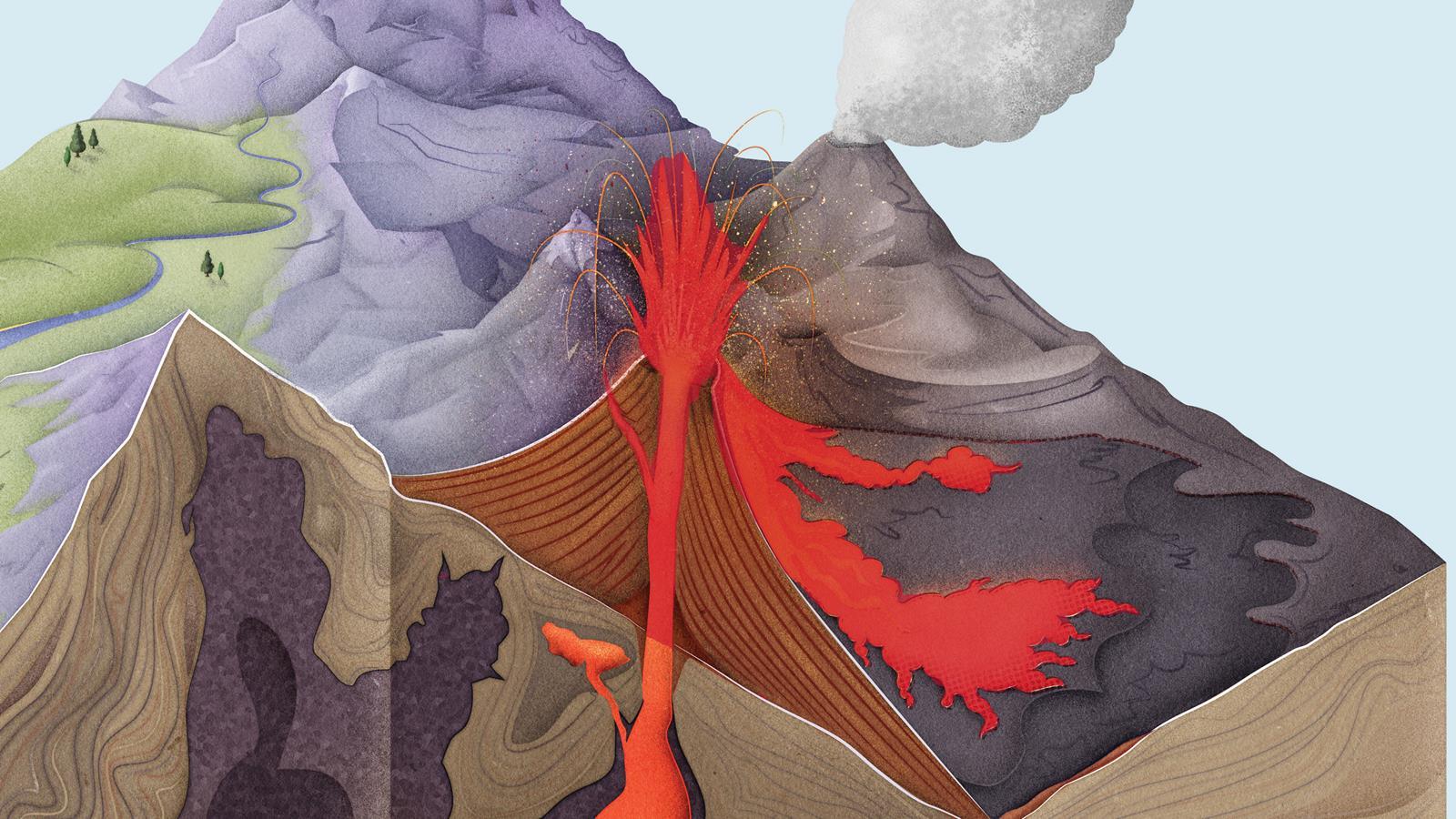

Weathering – weather, plants, animals and chemical processes break rocks into smaller places
Transportation – The fragments of rock formed by weathering fall from the rock face and can be carried away by moving wind or rain
Sediment – small fragments of rocks and minerals, as well as the remains of plants and animals, are carried out to sea and deposited in layers
Compaction and cementation – as layers of sediment build up, water and air in the lower layers is squeezed out. Minerals dissolved; in the water are left behind and act like cement, leading to the formation of sedimentary rocks
Sedimentary rocks – formed by compaction and cementation of sediment, sedimentary rocks may contain fossils of animals and plants trapped in the sediments as the rock was formed
Metamorphic rocks – formed when high temperatures and pressures change the mineral structures in rocks without the rocks being melted completely
Heat and pressure – deep in the Earth's crust or at plate boundaries where tectonic plates collide, rocks are exposed to extreme heat and pressure
Uplift – unbalanced forces in the Earth’s crust bring rocks from deep underground to the surface
Magma – underground, rocks are exposed to high temperatures and form molten and semi-molten rock called magma
Lava – when magma flows or erupts onto the Earth's surface it is called lava. Under lava flows, rocks are exposed to less extreme temperatures and pressures but still enough to change their structure
Igneous rocks – formed when molten rock cools and crystallises. Intrusive igneous rocks form deep underground when rock cools slowly. Extrusive igneous rocks form when molten rock erupts from a volcano
Did you know …?
Geologists measure the hardness of rock using the Mohs scale, introduced in 1822 by Friedrich Mohs. It is based simply on one mineral’s ability to scratch another.
The Giant’s Causeway
The Giant’s Causeway in Northern Ireland wasn’t really built by a giant but, in fact, was formed 50–60 million years ago from columns of basalt, an extrusive igneous rock. Although the mainly hexagonal shape of the columns is thought to be linked to the cooling and shrinking of successive lava flows on reaching the sea, scientists are still working on theories to fully explain the unusual structure.
Did you know …?
Igneous comes from the word ignis which means fire in Latin.
Teaching 11–14 students?
Then you need the poster, fact sheet and structure strips for the water cycle.
Perfect for roofs
Slate is a metamorphic rock usually formed from mudstone. When exposed to heat and pressure the microscopic crystals of the minerals in the mudstone form parallel layers perpendicular to the compaction force. This makes it easy to split into thin sheets and perfect for roof tiles.
Did you know …?
Glass is made from liquid sand. Most beach sand is grains of silicon dioxide (or quartz). When melted then cooled it is transformed into glass.
Stalactites and stalagmites
Limestone caves often contain columns of rock either hanging from the ceiling or coming up from the floor. Calcium and carbonate ions from the limestone dissolve in water passing through the ceilings of the caves. When the solution drips into the cave, the water evaporates to leave behind calcium carbonate either as a stalactite hanging from the ceiling, or as a stalagmite coming up from the cave floor.
More resources
- Develop your practice with this ultimate guide to teaching the chemistry of the rock cycle.
- Take a closer look at volcanoes with this article and resource about eruptions.
- Use this lesson plan to challenge learners to construct their own rock cycle and become rock cycle experts.
- Download this lesson plan and find out what happens to weathered pieces of rock in your 11–14 classes.
- Inspire your learners to study geology at university and explain why they need chemistry to do so.
- Find out how Tom’s role as a senior curator helps identify and unravel the mystery behind rocks and minerals.
Downloads
Rock cycle - poster
PDF, Size 1.36 mbRock cycle - fact sheet
Editable handout | Word, Size 0.44 mbRock cycle - fact sheet
Handout | PDF, Size 0.14 mbRoll and Rock game board, record cards, sample cards
Game | PDF, Size 0.58 mbRock cycle board game 11–14 Student instructions
Editable handout | Word, Size 0.43 mbRock cycle board game 11–14 Student instructions
Handout | PDF, Size 0.14 mbRock cycle board game 11–14 Teacher instructions
Editable handout | Word, Size 0.42 mbRock cycle board game 11–14 Teacher instructions
Handout | PDF, Size 0.15 mb




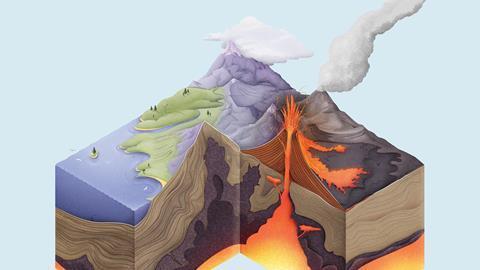










No comments yet